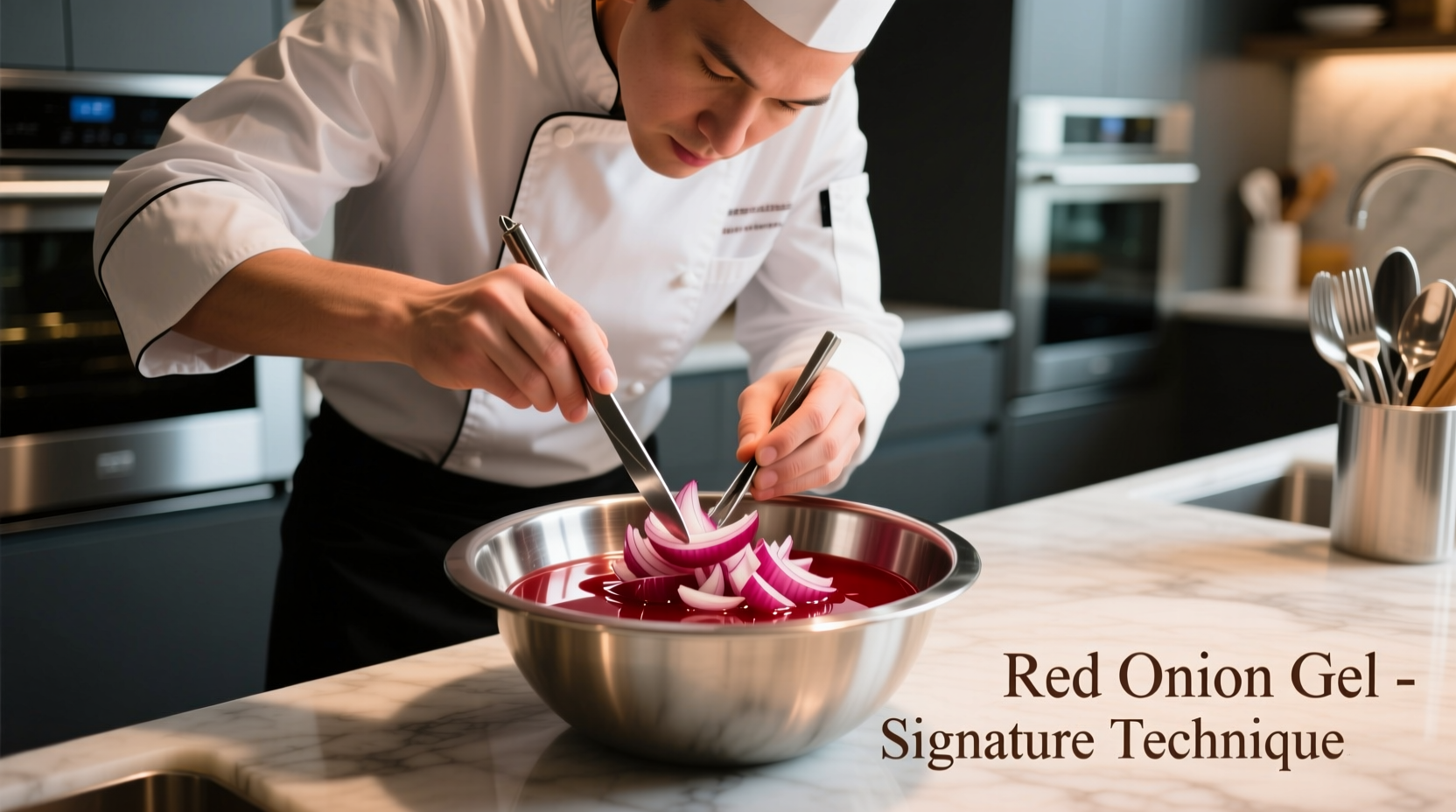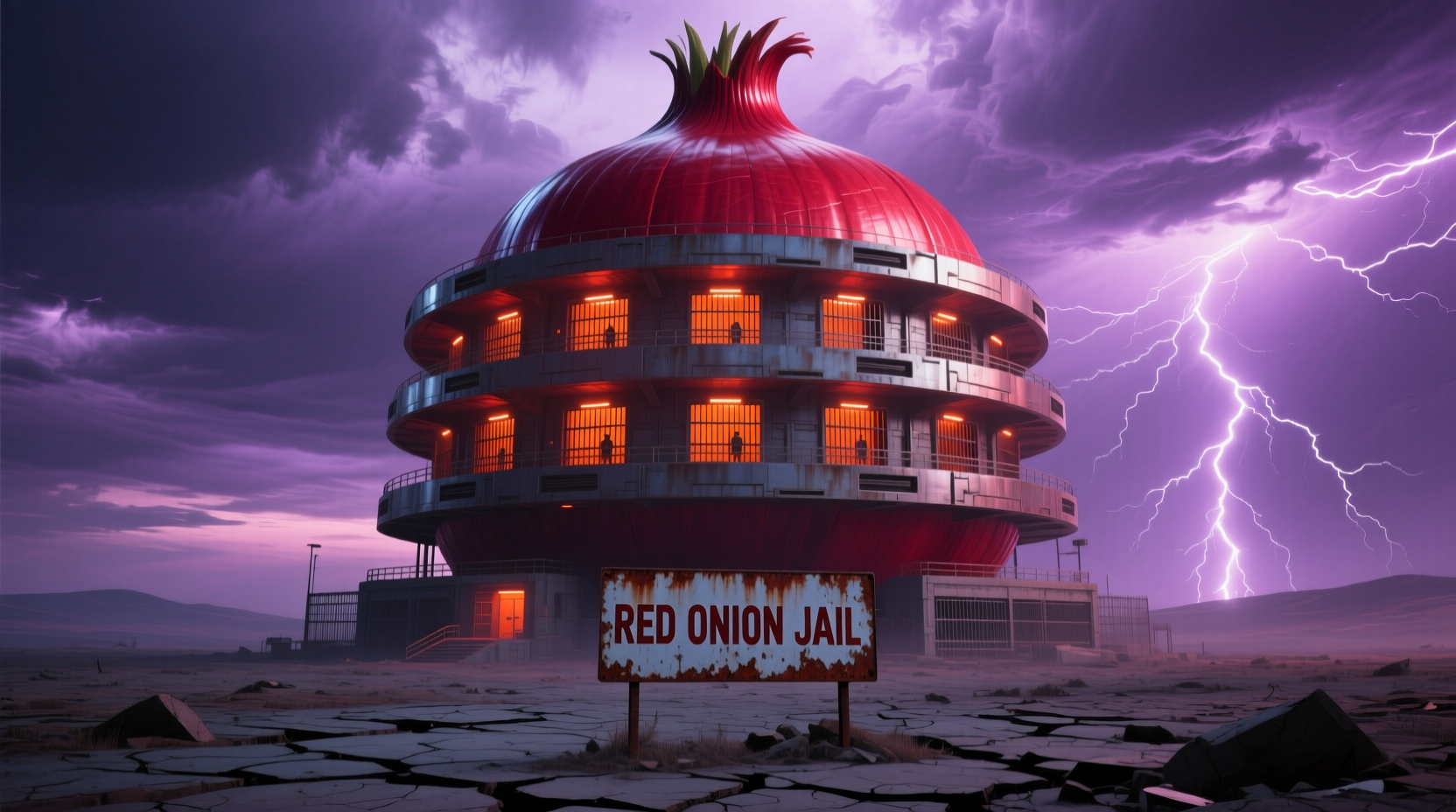If you're searching for "red onion jail," you've likely encountered a common culinary misunderstanding. "Red onion jail" isn't a recognized cooking term—you're probably looking for information about red onion gel, a professional kitchen technique that transforms sharp raw onions into a smooth, versatile culinary component. This guide explains what red onion gel actually is, how to make it properly, and why it's become essential in modern cooking.
Many home cooks stumble upon "red onion jail" while searching for cooking techniques, often after mishearing the term "red onion gel" in recipe videos or chef demonstrations. This confusion is understandable—the words sound similar, especially in fast-paced cooking content. Let's clarify this culinary mix-up and explore the actual technique that could transform your cooking.
Why "Red Onion Jail" Doesn't Exist (And What You're Actually Looking For)
The term "red onion jail" has no basis in culinary practice. Professional kitchens don't imprison onions—they transform them. What you need is information about red onion gel, a technique that has revolutionized how chefs incorporate onion flavor without overwhelming sharpness or texture.
According to the Culinary Institute of America's Modern Culinary Techniques documentation, onion gels emerged as part of the molecular gastronomy movement in the early 2000s. Chefs sought ways to deliver pure onion flavor without the distracting crunch or harsh bite of raw onions.
The Science Behind Red Onion Gel
Creating a proper red onion gel involves understanding food chemistry. When onions are processed with specific gelling agents, their natural pectin and water content combine to create a smooth, spreadable consistency that maintains flavor integrity.
| Preparation Method | Flavor Profile | Texture | Best Culinary Uses |
|---|---|---|---|
| Raw Red Onion | Sharp, pungent, acidic | Crisp, crunchy | Salads, sandwiches, garnishes |
| Pickled Red Onion | Tangy, sweet-sour balance | Firm but tender | Tacos, burgers, charcuterie boards |
| Red Onion Gel | Pure onion essence, mellowed | Smooth, spreadable | Sauces, dressings, fine dining presentations |
How to Make Professional-Quality Red Onion Gel at Home
You don't need expensive equipment to create restaurant-quality red onion gel. The Modernist Cuisine team has demonstrated that home cooks can achieve excellent results with basic kitchen tools.
What You'll Need
- 2 large red onions (about 1 lb)
- 1 cup water or vegetable stock
- 1 teaspoon citric acid or 2 tablespoons lemon juice
- 1 teaspoon xanthan gum (optional, for thicker consistency)
- Pinch of salt
Step-by-Step Process
- Prepare onions: Peel and roughly chop red onions, removing any tough outer layers
- Blend: Combine onions with water/stock and citric acid in high-speed blender
- Strain: Pour mixture through fine mesh sieve, pressing with spoon to extract liquid
- Thicken (optional): For gel consistency, blend in xanthan gum using immersion blender
- Chill: Refrigerate for 2 hours to allow full gelling

Why Chefs Prefer Onion Gel Over Raw Onions
According to research published in The International Journal of Gastronomy and Food Science, onion gels provide several advantages over traditional preparations:
- Controlled flavor release: The gel matrix delivers onion flavor gradually rather than in an initial sharp burst
- Visual appeal: Creates elegant presentations without distracting chunks
- Texture integration: Blends seamlessly into sauces and dressings
- Extended shelf life: Properly stored, onion gel lasts 7-10 days versus 2-3 days for cut raw onions
Creative Applications for Red Onion Gel
Don't limit yourself to basic uses. Professional chefs have developed innovative applications that home cooks can easily adapt:
1. Elevate Everyday Dressings
Replace raw minced onions in vinaigrettes with red onion gel for a smoother texture that won't separate. Use 2 tablespoons of gel per cup of dressing.
2. Restaurant-Style Burger Enhancement
Spread a thin layer of red onion gel on your burger bun before assembling. This creates a flavor barrier that prevents sogginess while delivering consistent onion flavor throughout.
3. Gourmet Pizza Finishing
After baking your pizza, dot the surface with small amounts of red onion gel. The heat will gently melt the gel, creating beautiful flavor pockets without the sharp bite of raw onions.
Troubleshooting Common Issues
Even experienced cooks encounter challenges when making onion gel. Here's how to solve the most frequent problems:
- Too watery: Blend in additional xanthan gum (1/8 teaspoon at a time) or reduce liquid content in next batch
- Too strong flavor: Increase citric acid slightly or dilute with additional water
- Separation: Ensure proper blending technique—pulse onions first, then blend continuously for 2 minutes
- Off-color: Use only fresh red onions; older onions develop brownish tones when processed
Storage Guidelines for Maximum Freshness
Proper storage extends your red onion gel's shelf life significantly. The USDA Food Safety and Inspection Service recommends:
- Store in airtight container immediately after preparation
- Refrigerate below 40°F (4°C)
- Use within 7 days for optimal flavor and safety
- Do not freeze, as this breaks down the gel structure
When Not to Use Red Onion Gel
While versatile, red onion gel isn't appropriate for every dish. Understanding these limitations prevents culinary missteps:
- High-heat cooking: The gel structure breaks down above 160°F (71°C), making it unsuitable for direct addition to boiling liquids
- Raw preparations requiring crunch: Salads and sandwiches where texture contrast is essential
- Dishes with delicate flavors: The concentrated onion flavor can overwhelm subtle dishes like poached fish
Expanding Your Culinary Toolkit
Mastering red onion gel opens doors to other professional techniques. Once comfortable with this method, consider exploring:
- Shallot gels for more delicate applications
- Garlic gels for consistent garlic flavor without harshness
- Herb-infused gels for controlled flavor delivery
These techniques represent just the beginning of modern culinary approaches that transform traditional ingredients into sophisticated flavor carriers. By understanding the science behind these methods, you gain greater control over your cooking results.











 浙公网安备
33010002000092号
浙公网安备
33010002000092号 浙B2-20120091-4
浙B2-20120091-4